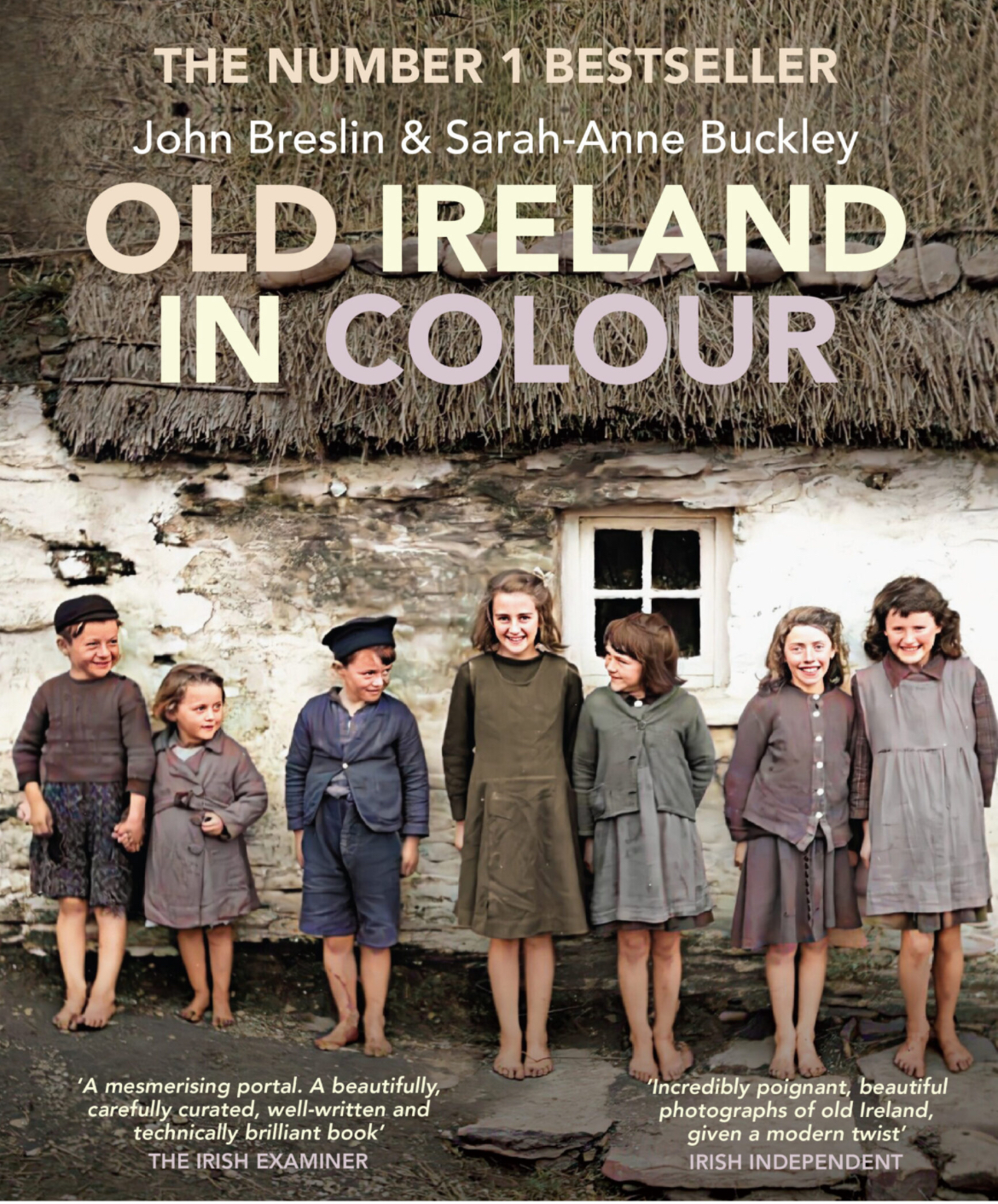Allan LEONARD reviewed Old Ireland in Colour by Sarah-Anne Buckley
Review of 'Old Ireland in Colour' on 'Goodreads'
5 stars
Old Ireland in Colour is an ongoing project of colourising black and white images by photographers in Ireland in the late 19th to early 20th century. The catalyst was John Breslin working on colourising some photos of his grandparents, when he discovered an automated system called DeOldify. He looked for more images to colourise, starting with old photographs of NUI Galway, then the Galway/Connemara area, and then of Ireland as a whole.
Breslin tries to use either public domain or Creative Commons images as much as possible. Resources include the National Folklore Collection (Cúchas), the National Library of Ireland, the Public Record Office of Northern Ireland, the Library of Congress, and Wikimedia Commons.
Essentially, the process of colourisation works by the computer applying colour based on a bank of millions of colour images. Accuracy depends on what is in the bank, so common items such as grass, trees, and the sea come out well; inaccurate colours or hues for clothes or skin need to be adjusted in human post-production.
An example of this is an image of Countess Markiewicz’s uniform, from an automatically applied purple to a manually adjusted bottle green.
The project became popular on dedicated social media platforms Twitter, Facebook, Instagram, and YouTube. It was then suggested to Breslin to consider creating a book version. In early 2020, Sarah-Anne Beckley joined Breslin, to advise on the historical context for the book. He described it as “a Covid book”, as the authors, designers, and publishers never met each other in person during the process.
Old Ireland in Colour, the book, was published by Merrion Press in September 2020, in a hardback format of 304 pages, measuring 19 by 24 cms. There are over 170 images covering all four provinces of Ireland, spanning the period from just before the Great Famine to the outbreak of The Troubles. The images are grouped thematically: the Irish Revolution, society and culture, women and children, the Irish abroad, and scenic Ireland.
The physical production of the book is very good quality. The paper has a good thickness and touch, and the colour reproduction appears accurate (indeed, Breslin remarked that the print versions of the colourised images appear more forgiving than the screen versions). The saddle stitching is welcomed, as it allows the occasional double-spread image to lie flatter. The concise image annotations provide essential information, to help the reader place the image in context.
There is no faulting the attention to detail that Breslin gave to every single image in the book. It must have helped that many of the images would be obtained from high resolution original photographs, such as large format cameras of the day. This would have enhanced the colourisation effect, so that we are presented with high resolution colour images, akin to what we are familiar with seeing in contemporary magazines. Remember, in many cases the detail was already in the black and white photograph; but instead of 256 shades of grey, your eye and brain are now processing it in millions of colours.
Thanks to Breslin’s meticulousness, the result for the reader is a believable, literally colourful survey of Ireland and its people over a particular period of time. There is a good mixture of the notable, the landscapes, and the everyday lives of many.
A summary of photographic sources is listed at the end, as well as a detailed archive reference for every image. As the authors explain, “We acknowledge fully the ethical concerns that arise from altering these primary documents and hope that the book leads the reader to the original source, as opposed to offering a replacement for these records.”
The authors offer Old Ireland in Colour as “an illuminating look at Irish life, Irish people and the dramatic transformation and change that has occurred over the 125 years covered in this collection.” Breslin told Allan Preston at the Belfast Telegraph that he hoped it would help to spark conversations between different generations.
Old Ireland in Colour is successful, not because of the technical feat of artificial intelligence modifying original work, but perhaps because it offers us a new glimpse — even if an imagined glimpse — of what the original photographers saw when they captured the light onto their analogue films and papers. It remains to us to derive meaning from Breslin and Buckley’s compendium.
Originally published at Mr Ulster.

